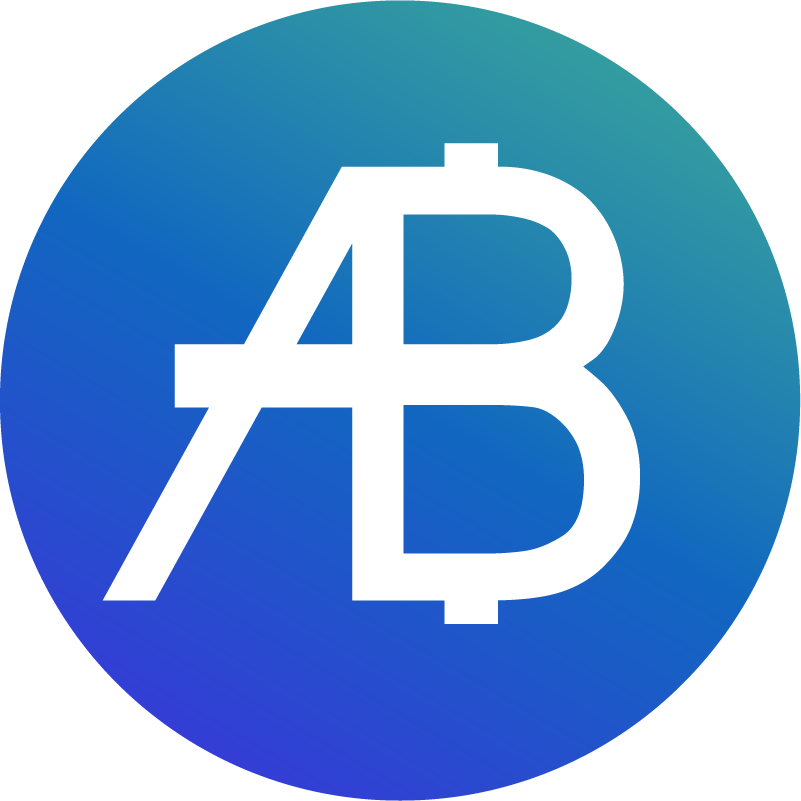Best Crypto Exchanges in 2026: What to Know Before You Start Trading
Key Takeaways
• By 2026, crypto exchanges have matured into full-service trading platforms offering spot markets alongside derivatives, staking, copy trading, and automated strategies, reflecting a more professional and competitive industry.
• Security and transparency are now baseline expectations, with leading exchanges implementing proof of reserves, cold wallet custody, insurance or protection funds, and stricter risk management standards.
• Derivatives trading dominates global crypto volume, making liquidity depth, fee structures, margin systems, and liquidation mechanisms critical factors for active and professional traders.
• Major platforms including Bitget, Binance, Coinbase, OKX, Bybit, Crypto.com, Gemini, KuCoin, and MEXC serve different trader profiles depending on experience level, regional availability, and strategic focus.
How to Choose the Best Crypto Exchange in 2026
By 2026, choosing a crypto exchange is about more than simply buying and selling cryptocurrencies. Leading platforms now combine spot trading with derivatives, staking, copy trading, and automated strategies, giving traders multiple ways to grow and manage their portfolios. The best exchange is one that aligns with your experience level, trading goals, and appetite for risk rather than just being the largest or most well-known.
When evaluating exchanges, focus on security and transparency, including proof-of-reserves audits and custody practices, as well as liquidity, fee structures, supported assets, and customer support. Platforms such as Bitget, Binance, and Coinbase each prioritize these features differently. By understanding how these tools and services perform in real trading conditions, you can choose a platform that is reliable, versatile, and tailored to your strategy.
Bitget
Founded in 2018, Bitget has rapidly grown into a top-tier global crypto platform by positioning itself as a “Universal Exchange.” Rather than focusing solely on crypto spot markets, Bitget integrates digital assets with tokenized traditional-finance products, offering traders access to multiple asset classes within a single trading environment.
From its mobile app to its advanced web interface, Bitget supports spot and futures trading across hundreds of cryptocurrencies, alongside tokenized stocks, ETFs, and other real-world assets. This unified approach allows traders to manage diversified strategies without needing to move funds across separate platforms.
While Bitget offers a comprehensive range of spot and derivatives products, it stands out for its breadth of supported markets and its emphasis on copy trading. The platform allows users to trade cryptocurrencies alongside more than 100 on-chain stocks, including major global equities, with leverage of up to 25×. Through Bitget TradFi, traders can also access forex and commodities such as gold, all via USDT-denominated trading pairs.
Copy trading is a core component of the Bitget ecosystem. The platform pioneered large-scale copy trading in crypto, enabling users to automatically mirror the strategies of experienced traders. Both spot copy trading and futures copy trading are available, along with AI-driven signal bots and customizable automated trading tools. This structure lowers the barrier to entry for newer traders while still offering flexibility for more advanced users.
Security and transparency remain central to Bitget’s operations. The exchange publishes regular proof-of-reserves data, with its December 2025 report showing approximately 175% collateral coverage for on-chain user assets. Bitget also maintains a dedicated Protection Fund, uses cold-storage custody, and enforces mandatory identity verification. While the platform is not available to U.S. residents, it operates under regulatory frameworks in multiple regions, including oversight for its traditional-finance offerings through the Mauritius Financial Services Commission.
With its combination of broad asset coverage, integrated crypto and traditional-finance markets, copy trading infrastructure, and emphasis on transparency, Bitget has established itself as a compelling option for traders seeking a more versatile trading experience in 2026.
Feeling ready? Register now and explore the wonderful crypto world at Bitget!
Binance
As the largest cryptocurrency exchange by trading volume, Binance remains a major global trading venue in 2026. The platform reports more than 300 million registered users and supports thousands of trading pairs across spot, margin, and derivatives markets. Its scale and liquidity make it a central marketplace for a wide range of crypto trading activity.
Binance offers a broad derivatives lineup, including USDT- and coin-margined perpetual futures, quarterly futures, options, and leveraged tokens. However, availability and functionality vary by region. In certain jurisdictions, users may be routed to localized versions of the platform, such as Binance.US, which offer more limited asset support and feature sets.
Should You Use Bitget or Binance in 2026?
Both Bitget and Binance offer extensive derivatives markets and global access, though they emphasize different aspects of the trading experience. Binance focuses on scale, liquidity, and a broad ecosystem of crypto services, while Bitget places greater emphasis on copy trading tools and access to tokenized traditional assets.
In terms of transparency and compliance, both platforms continue to adapt to evolving regulatory requirements across regions. Availability of specific products and features may vary depending on a user’s location. For traders comparing exchanges in 2026, Binance and Bitget represent two large, multi-product platforms with distinct approaches to serving global crypto markets.
Coinbase
Founded in 2012, Coinbase is one of the most established cryptocurrency platforms in the industry and is widely known for its focus on regulatory compliance and user accessibility. Headquartered in the United States, Coinbase is a publicly listed company and primarily serves retail investors, though it has expanded its offerings to include more advanced trading tools in recent years.
Coinbase provides spot trading for a broad range of cryptocurrencies, along with derivatives access in select regions. The platform emphasizes simplicity, fiat on-ramps, and regulatory alignment, making it a common entry point for users new to crypto markets.
Should You Use Bitget or Coinbase in 2026?
Bitget and Coinbase reflect different approaches to serving crypto traders in 2026. Coinbase emphasizes regulatory alignment, ease of use, and strong fiat on-ramps, making it a common choice for users who prioritize simplicity and compliance, particularly in regulated markets.
Bitget, in contrast, focuses on a broader trading toolkit, including derivatives, copy trading, and access to tokenized traditional assets within a unified trading environment. For traders comparing the two platforms, the decision often depends on whether they value a compliance-first experience with limited product depth or a strategy-oriented platform offering more advanced trading features and asset diversity.
OKX
Founded in 2017, OKX is a global cryptocurrency exchange known for its strong focus on derivatives trading and on-chain services. The platform serves users across numerous regions and offers a broad suite of crypto products designed for active and advanced traders.
OKX provides spot and derivatives trading across hundreds of digital assets, with support for perpetual futures, options, and margin trading. In recent years, the exchange has also expanded its Web3 offerings, integrating wallets, DeFi access, and NFT tools alongside centralized trading services.
Should You Use Bitget or OKX in 2026?
Bitget and OKX both cater to active traders, but they emphasize different aspects of the crypto experience. OKX focuses on derivatives depth, options trading, and on-chain integrations, appealing to users who want exposure to both centralized and decentralized markets.
Bitget, by comparison, places greater emphasis on futures trading, copy trading, and access to tokenized traditional assets within a single trading environment. For traders evaluating these platforms in 2026, the choice often depends on whether they prioritize advanced derivatives and Web3 tools or strategy-driven trading and broader asset diversification.
Bybit
Founded in 2018, Bybit has established itself as a derivatives-focused cryptocurrency exchange with a strong presence among active traders. The platform serves users globally and is particularly known for its performance-oriented trading infrastructure and emphasis on perpetual futures markets.
Bybit offers spot trading alongside a wide range of derivatives products, including USDT- and coin-margined perpetual contracts, options, and margin trading. Over time, the exchange has expanded its product suite to include staking, earn products, and trading tools aimed at both retail and professional users.
Should You Use Bitget or Bybit in 2026?
Bitget and Bybit both appeal to traders interested in derivatives, but they approach the market differently. Bybit centers on performance, liquidity, and derivatives depth, making it well suited for traders who prioritize execution speed and leveraged products.
Bitget, in contrast, emphasizes strategy accessibility through copy trading and trading bot features, along with broader asset exposure that includes tokenized traditional assets. For traders comparing these platforms in 2026, the decision often comes down to whether they prefer a derivatives-first environment or a more diversified, strategy-driven trading experience.
KuCoin
Founded in 2017, KuCoin is a global cryptocurrency exchange often described as a platform “by the people, for the people.” It has built a strong reputation among retail traders for its wide asset selection and early access to emerging crypto projects.
KuCoin supports spot trading, margin trading, futures, and a range of passive earning products across hundreds of cryptocurrencies. The exchange is particularly known for listing smaller-cap and newly launched tokens earlier than many larger platforms, which has made it popular among traders seeking diversification beyond major assets.
Should You Use Bitget or KuCoin in 2026?
KuCoin and Bitget appeal to different trading priorities. KuCoin is often favored by traders seeking broad exposure to altcoins and early-stage projects, especially those willing to manage higher volatility and conduct their own research.
Bitget, in contrast, focuses more on structured trading tools, derivatives depth, and social trading features such as copy trading, alongside access to tokenized traditional assets. For traders in 2026, the decision typically comes down to whether asset discovery or strategy-driven trading and risk management is the higher priority.
MEXC
Founded in 2018, MEXC is a global cryptocurrency exchange that has built its reputation around fast asset listings and broad market access. The platform is widely used by traders looking for early exposure to newly launched tokens and niche crypto sectors.
MEXC supports spot trading, margin trading, futures, and ETF-style leveraged products across a large number of cryptocurrencies. Its listing pace is one of the fastest in the industry, which has made it a frequent destination for traders seeking high-volatility opportunities tied to emerging projects and market narratives.
Should You Use Bitget or MEXC in 2026?
MEXC is often favored by traders focused on discovering new and emerging tokens and who are comfortable navigating higher volatility environments. Its fast-paced listings and broad asset catalog support speculative and short-term trading strategies.
Bitget, by comparison, emphasizes a more structured trading environment, combining derivatives depth, copy trading, and access to tokenized traditional assets within a single platform. For traders in 2026, the choice typically depends on whether early asset discovery or strategy-oriented trading tools and risk management take priority.
Crypto.com
Founded in 2016, Crypto.com is a global cryptocurrency platform known for its mobile-first approach and broad consumer-facing ecosystem. Headquartered in Singapore, the exchange has built strong brand recognition through payments, rewards, and lifestyle-oriented crypto products alongside core trading services.
Crypto.com supports spot trading, margin trading, derivatives, and a range of earning products across hundreds of cryptocurrencies. Its ecosystem extends beyond trading to include a crypto wallet, Visa card programs, staking services, and payment tools designed to make digital assets usable in everyday transactions.
Should You Use Bitget or Crypto.com in 2026?
Crypto.com tends to appeal to users looking for an all-in-one crypto lifestyle platform that combines trading with payments, rewards, and everyday usability. Its strengths lie in accessibility and consumer-focused features rather than advanced trading specialization.
Bitget, by contrast, emphasizes strategy-driven trading, offering deeper derivatives markets, copy trading, and access to tokenized traditional assets within a unified trading environment. For traders in 2026, the choice often comes down to whether everyday crypto utility or advanced trading tools and market access better align with their goals.
Gemini
Founded in 2014, Gemini is a U.S.-based cryptocurrency exchange known for its compliance-first approach and focus on security and transparency. The platform is often associated with regulated market access and is positioned toward users who prioritize regulatory clarity and institutional-grade safeguards.
Gemini supports spot trading across a more limited range of cryptocurrencies compared to many global exchanges, alongside custody services, staking in select regions, and institutional products. Its interface is designed to be approachable for beginners, while its ActiveTrader platform offers more advanced tools for experienced users.
Should You Use Bitget or Gemini in 2026?
Gemini is often favored by users who prioritize regulatory oversight, asset custody, and simplicity, particularly those trading primarily in regulated markets. Its platform is well suited for conservative trading strategies and long-term holding.
Bitget, by contrast, targets traders seeking broader market access, including derivatives, copy trading, and tokenized traditional assets within a unified trading environment. For traders in 2026, the decision typically depends on whether regulatory alignment or trading flexibility and product depth is the higher priority.
Best Place to Trade Crypto in 2026
Rather than a single “best” exchange, crypto trading in 2026 is defined by use case. Different platforms excel in different areas, depending on whether traders prioritize regulation, liquidity, advanced tools, or asset diversity.
Best for All-Around Trading Platforms
• Bitget – Combines spot, futures, copy trading, and tokenized assets in a single ecosystem, appealing to traders seeking versatility.• Binance – Offers unmatched liquidity and product breadth, covering spot, margin, and derivatives markets globally.• OKX – Focuses on advanced trading tools and Web3 integration alongside traditional exchange services.
Best for Derivatives and Active Traders
• Binance – Known for deep futures liquidity, low fees, and a comprehensive derivatives suite.• Bybit – Popular among high-frequency traders for its interface design and derivatives-focused features.• Bitget – Strong presence in futures trading, enhanced by social and copy-trading tools for strategy-based users.
Best for Beginners and Regulated Markets
• Coinbase – Emphasizes regulatory compliance, fiat access, and ease of use for new traders.• Gemini – Known for its compliance-first approach and custody-focused infrastructure.• Crypto.com – Offers a consumer-friendly ecosystem with trading, payments, and crypto-linked cards.
Best for Altcoins and Asset Discovery
• KuCoin – Recognized for early token listings and broad altcoin availability.• MEXC – Frequently lists emerging assets and supports high-risk, high-volatility trading strategies.• Bitget – Balances a growing altcoin selection with structured derivatives and risk-management tools.
Conclusion
The crypto exchange landscape in 2026 is more mature, competitive, and specialized than ever before. Rather than a one size fits all solution, today’s leading platforms differentiate themselves through trading depth, product diversity, regulatory posture, and user experience. For traders, this means choosing an exchange based on how well it aligns with individual goals, risk tolerance, and preferred trading style rather than headline metrics alone.
Across the market, exchanges that successfully combine liquidity, transparency, and innovation are setting the pace. Platforms offering derivatives, structured products, and advanced tools continue to attract active traders, while regulated, user-friendly exchanges remain essential entry points for newcomers. In this environment, Bitget stands out by bridging multiple trader segments, pairing a broad trading suite with social and strategy-driven features that reflect how many users actually trade today.
As adoption expands and regulation continues to evolve, the best exchange in 2026 is ultimately the one that balances access, trust, and functionality. Traders who take the time to understand these differences will be better positioned to navigate market volatility and build sustainable long-term strategies in the digital asset economy.
Create Your Account on Bitget Today and Receive a 6,200 USDT Newcomer’s Gift Package!
Disclaimer: The opinions expressed in this article are for informational purposes only. This article does not constitute an endorsement of any of the products and services discussed or investment, financial, or trading advice. Qualified professionals should be consulted prior to making financial decisions.
Bitget Academy2025-12-23 09:45































































![Sun [New]](https://img.bgstatic.com/multiLang/coinPriceLogo/sun-new.png)















![BitTorrent [New]](https://img.bgstatic.com/multiLang/coinPriceLogo/c87b5c29752b2123cca40f4dd2c6b6501710522527061.png)





























































